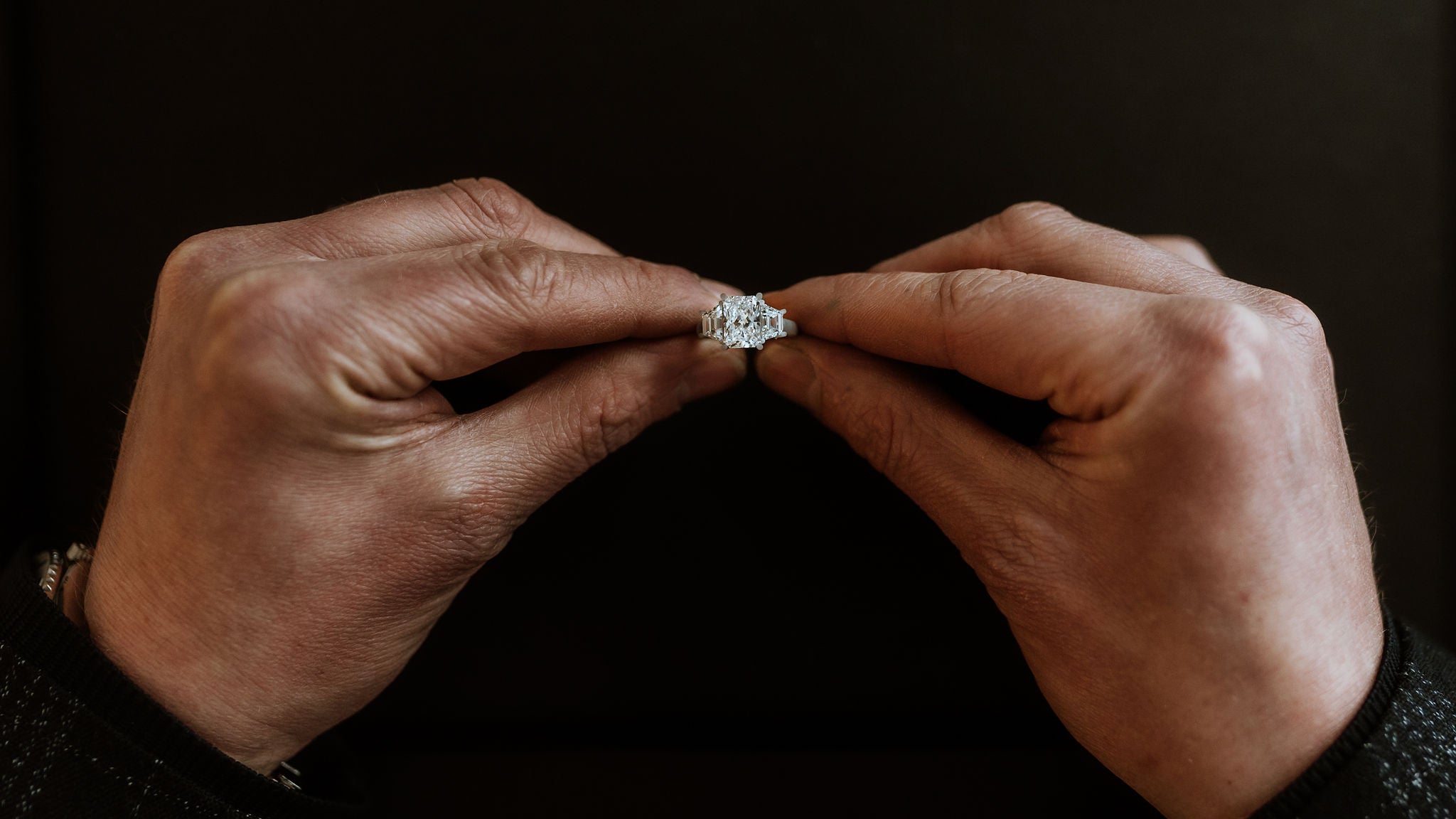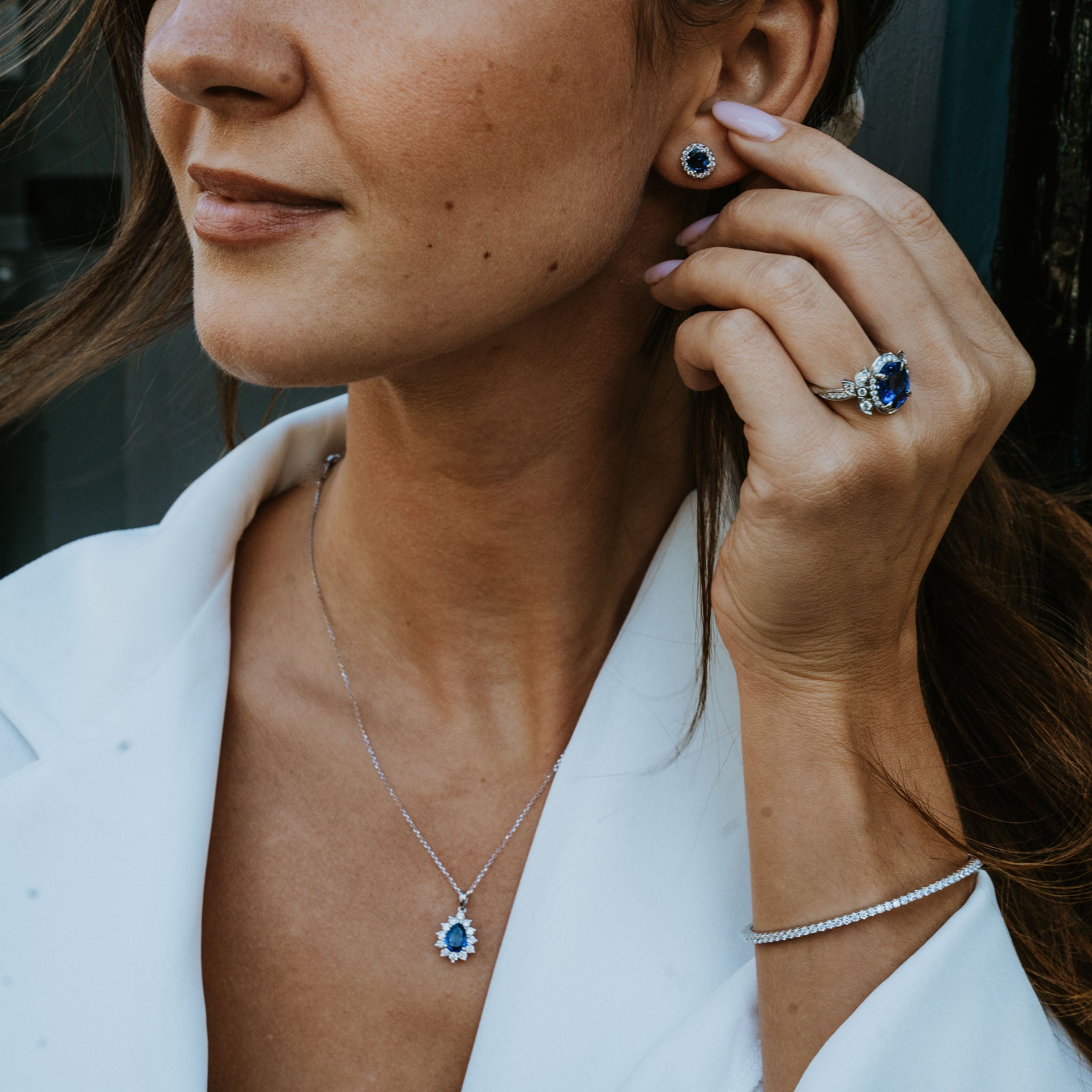 If you are looking for a solitaire diamond ring, we have some great options for you, or we can make it bespoke. Each of these has one great thing in common: That one single, gleaming precious stone as the centre of attention; beautiful, elegant and simple all at once.
If you are looking for a solitaire diamond ring, we have some great options for you, or we can make it bespoke. Each of these has one great thing in common: That one single, gleaming precious stone as the centre of attention; beautiful, elegant and simple all at once.
For many brides or brides-to-be, this is just the kind of style they like. While others like the options of multiple stones (sometimes including other stones such as rubies and sapphire to add colour and visibility), this simple but opulent style is very popular. The solitaire diamond style will, we can be sure, never go out of fashion.
However, there are some variations on offer even with such a straightforward style, with this concerning the ring itself. Of course, different metals can be used. It could be gold, but it may be silver or platinum. Moreover, if you do choose gold, it need not necessarily be the familiar yellow colour.
Introducing Rose
Rose gold is a novel option, whether in a solitaire engagement ring, earrings or other items such as watches. But how does such a colour come about?
The first thing to note is that this is not a pure, natural gold, which only appears in one colour. The purity of any gold is measured in the carat system, with 24 carats meaning the metal present is entirely gold.
However, because gold is a very precious metal and also has the disadvantage of being soft and therefore more prone to damage in its pure state, jewellers may mix other metals in as an alloy to toughen it or alter the colour.
The proportion of the alloy that is pure gold will determine the carat level. So, for example, 23 carats means it is nearly all pure gold. Nine carats is the lowest level allowed for it to still be classed as gold.
Other metals can be included in the alloy, and in some cases, these will not alter the familiar colour. However, rose gold is a deliberately different case.
Faberge The Inventor
This was the invention of the Russian jeweller Peter Carl Faberge, best known for creating Faberge’s eggs. He developed rose gold in the 19th century, with the alloy including copper to alter the colour, as well as a small amount of silver.
The amount of copper and silver can vary, so if, for example, this is 25 per cent and gold accounts for 75 per cent, it is classed as 18 carat gold.
Rose gold was popularised by the Parisian jeweller Cartier, with the inter-war years proving to be the time when it really took off in popularity. In the roaring twenties, this was as much a part of the scene as the feather boa, pearl necklaces and flapper dresses.
The popularity of rose gold did not end there as it remained fashionable beyond the 20s and WW2, even if the Depression and a world war made it harder for many people to afford. Nonetheless, while economic crises and global conflicts come and go, the beauty of rose gold remains.
Among the attributes rose gold has is that it helps provide some extra definition to the diamond on a solitaire ring. As it is not worn as much as it was in its heyday a century ago, such a ring may particularly stand out today.
The White Fantastic
Rose is not the only variant of yellow gold. Indeed, Cartier’s use of rose gold included the production of a trinity ring that combined three strands, in rose, yellow and white gold.
Like rose gold, white gold is an alloy, this time with silvery-coloured metals such as palladium or nickel. It may be plated with platinum.
White gold has the benefit of making the metal harder overall, while unlike silver, which it resembles visually, it does not tarnish. These qualities are one of the reasons we offer this as an option for solitaire engagement rings, such as the novel twist design (other options include yellow gold and platinum).
The twist design is an example of the ways in which a traditional style like a solitaire ring can be varied. But style and shape are not the only ones. The gems can be cut in different shapes themselves, of course, such as a pear cut, oval cut or Asscher cut. The variations in metals offer another set of options.
It may even be that you want a bespoke ring like the one Cartier created, using yellow, rose and silver gold, which would be an eye-opener, a conversation starter and, above all, something that would truly stand out.
As specialists in creating bespoke jewellery, we are ready to develop the rings and other items that suit your tastes and desires. When it comes to gold, they don’t have to involve a yellow metal.





